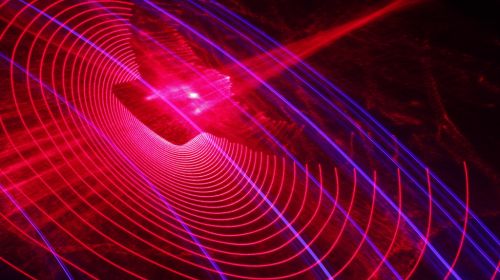Rapid Improvements in Lidar Technology Could Have Surveillance Implications


Technology Review has an article out on advances in lidar technology. The article is a reminder of just how many fronts there are where we’re seeing large technological advances with possible implications for surveillance.
Lidar is like radar except it uses lasers instead of sound radio waves—firing off bursts of lasers in quick succession to collect precise distance measurements in order to create a three-dimensional map of any space. Many good uses are being discovered for this—lidar is used by geologists to create highly detailed maps of the earth’s surface, for example. Archaeologists used the technology to discover clusters of architectural structures hidden in the Honduran rainforest, which some claimed to be the legendary lost city of La Ciudad Blanca (“the White City”). Lidar was also used to reveal Mayan ruins in the jungles of Peru and an ancient Khmer city in Cambodia. Lidar is also used by Google and other makers of robotic cars to help the vehicles sense their surroundings.
The technology is apparently advancing rapidly. In 2013, lidar was used to reveal vast hidden structures around the famous Angkor Wat temple in Cambodia. “Amazingly,” Technology Review wrote in June 2013, the Angkor Wat scanning operation took only 20 hours to capture imagery “that would have taken many years to assemble on the ground, if at all.” The newer system that Technology Review is now reporting on, however, is four times faster and more detailed, going from one-meter resolution to a resolution of 30 centimeters. And in its latest story Technology Review reports on a new generation of the technology that is another 10 times better still, and could have done the Angkor Wat job in about half an hour.
Obviously one potential surveillance use of lidar is for manned or unmanned aerial surveillance. Lidar can be used not only for highly detailed 3D images—with the ability to see through some barriers such as foliage—but also for such functions as change detection, in which even small changes in a landscape, such as tire tracks, are automatically flagged.
Lidar can also be used to track people through different locations, including crowded spaces. Combined with other technologies such as face recognition or cell phone tracking, the technology could prove a powerful part of a tracking system. As this Raytheon video entitled “LIDAR People Tracking” boasts, “Lidar can segment, classify, and track people. Thee tracks can be used to determine people’s activity, steer other sensors, monitor violations of geo-fences, et cetera.”
There may well be other clever uses for this technology that nobody has thought of yet.
Of course we don’t know whether, given all the technologies we’re facing, lidar will be significant in the surveillance space. But the larger point here is, we have a lot of very powerful sensing and surveillance technologies coming at us from all directions. When it comes to our privacy laws and institutions, we’re in no way ready for the continuing onslaught.

